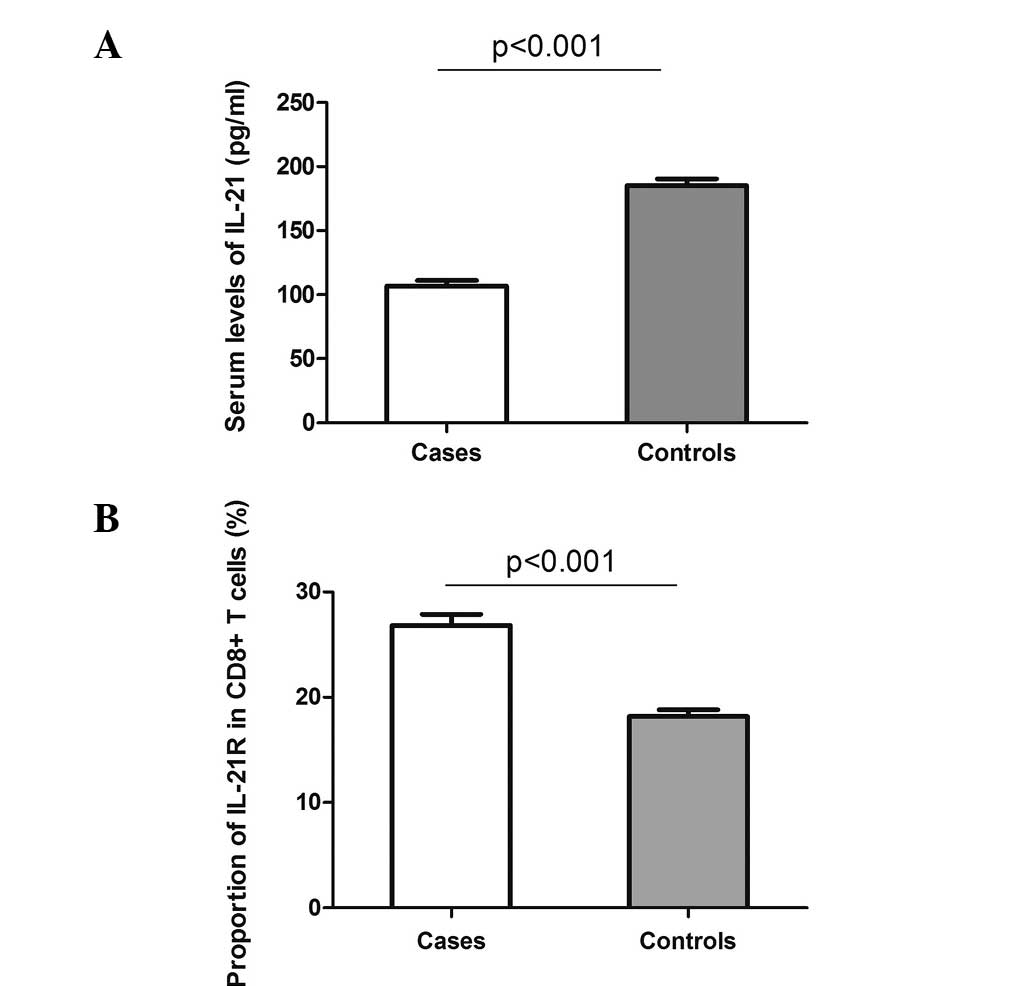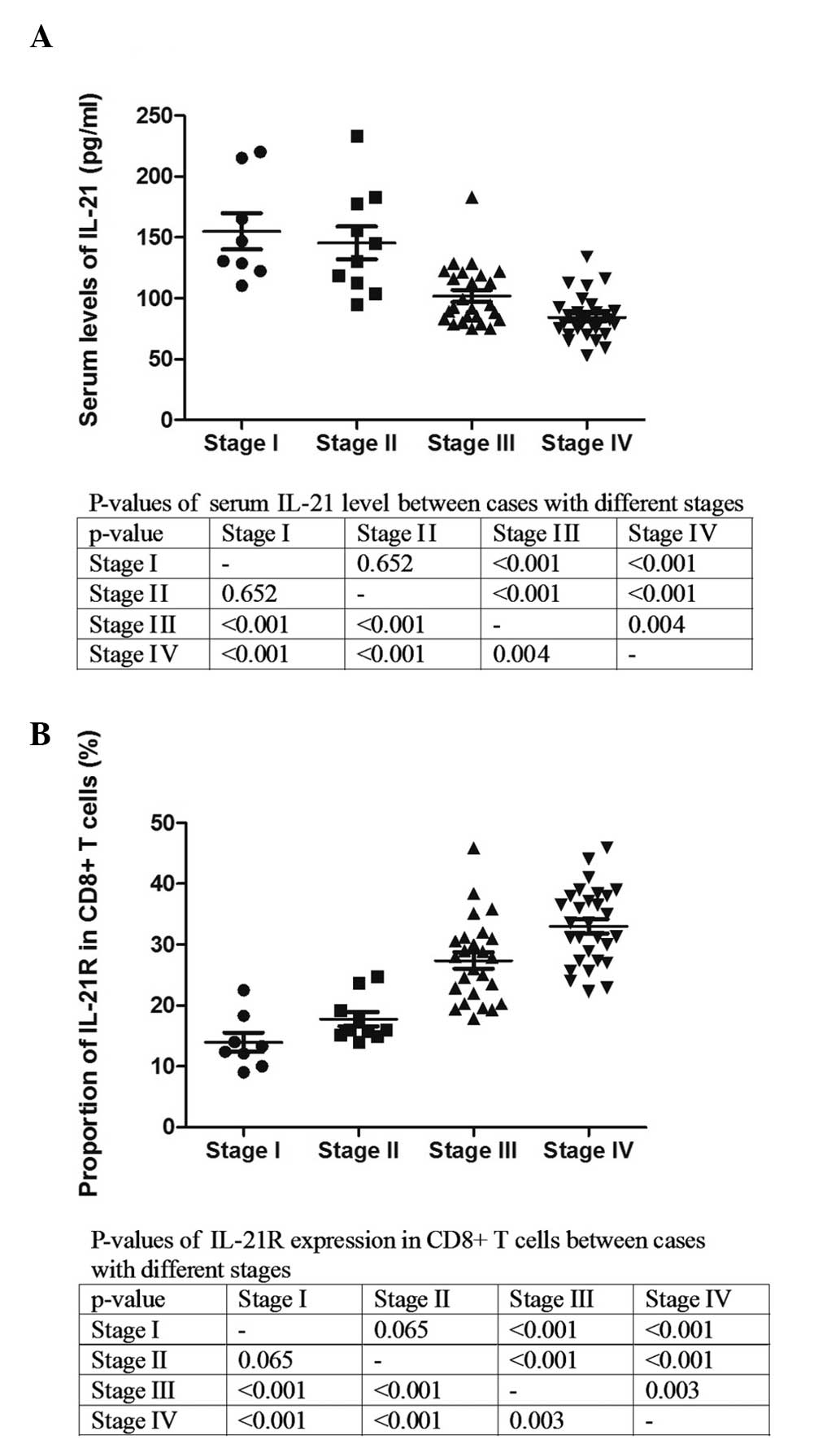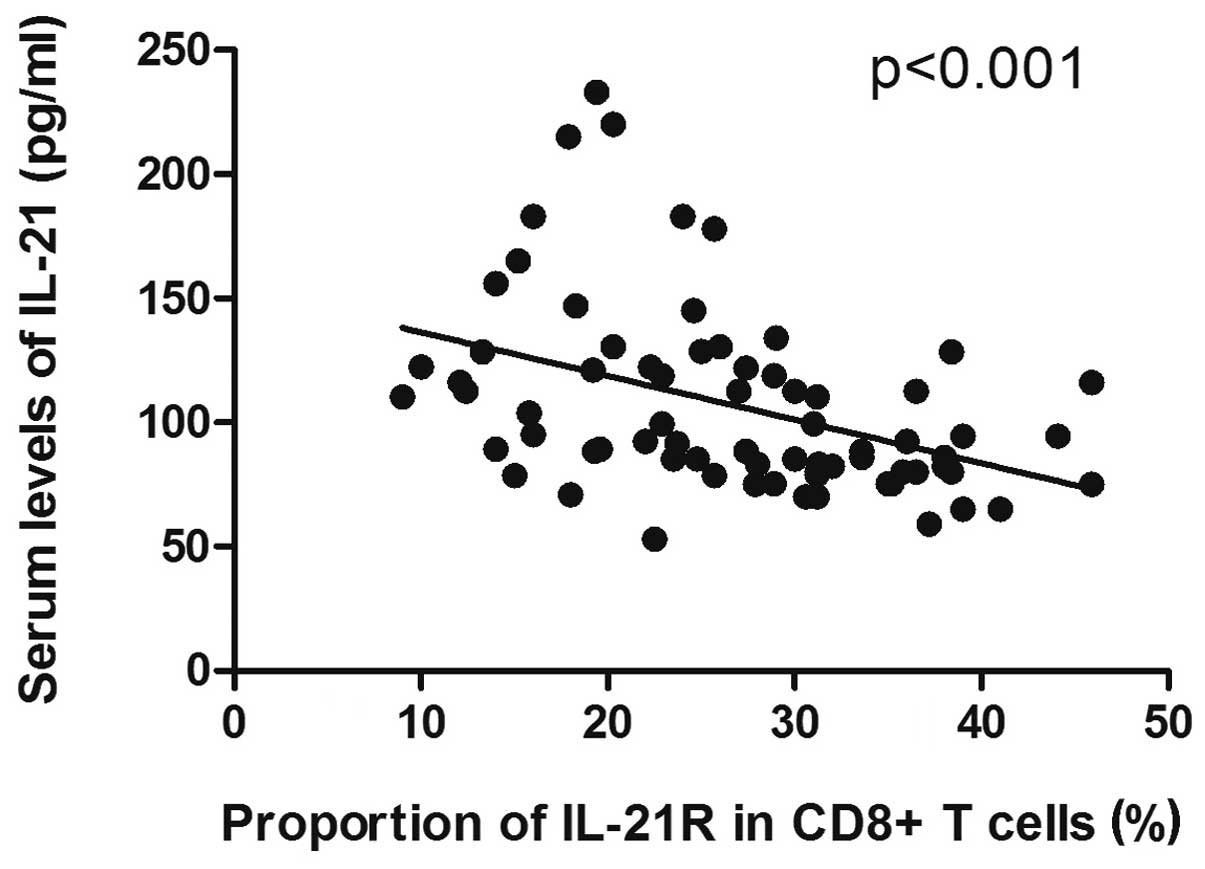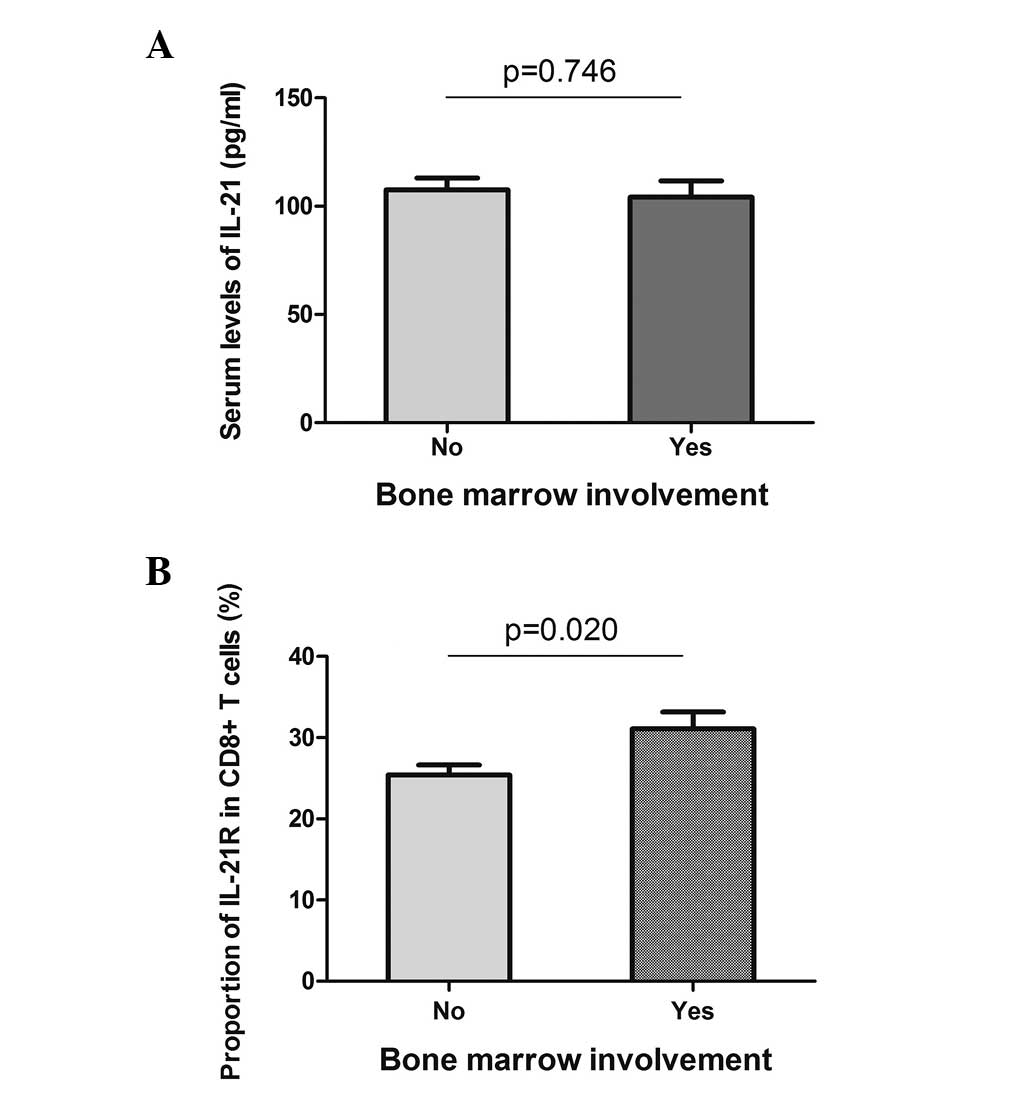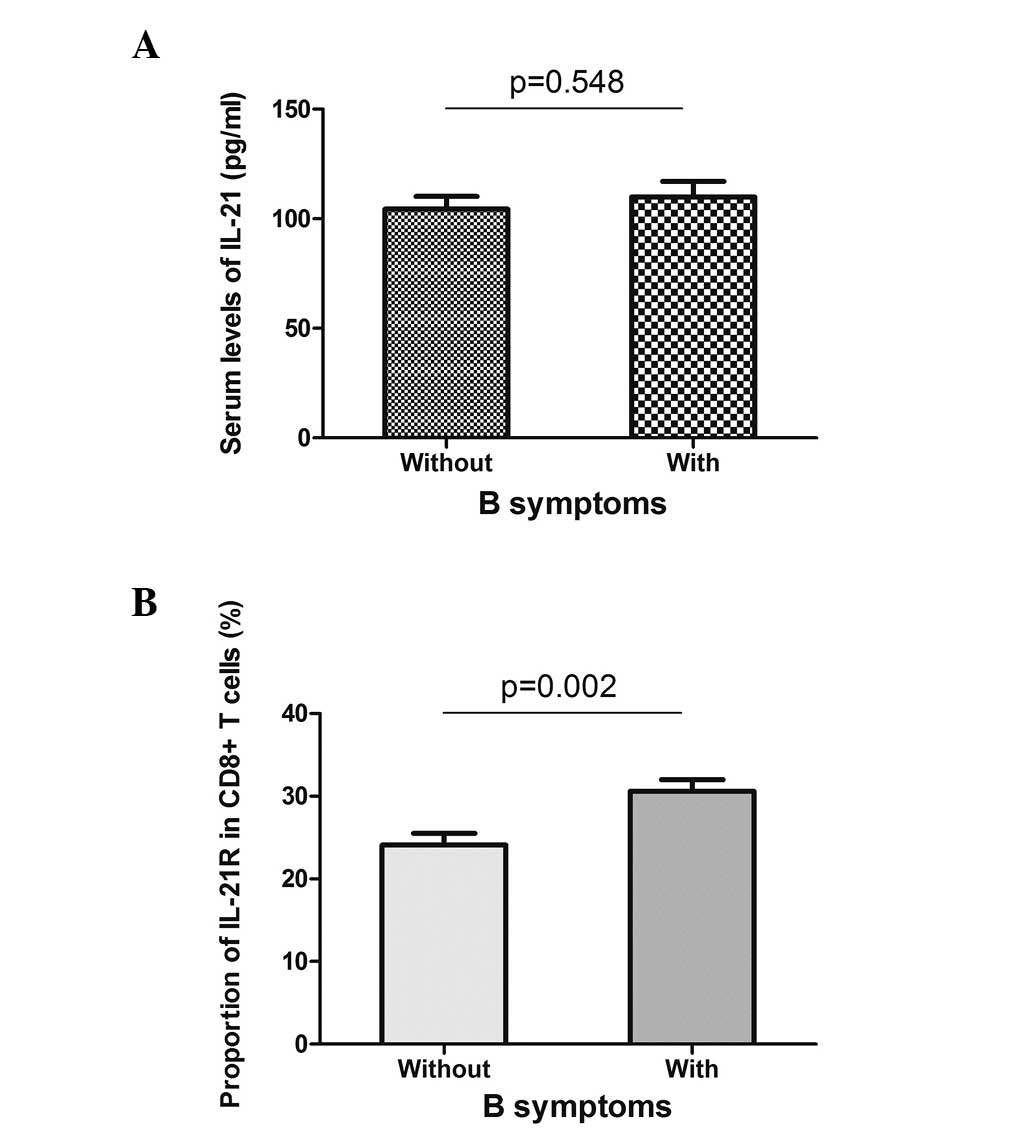Effect of interleukin 21 and its receptor on CD8+ T cells in the pathogenesis of diffuse large B‑cell lymphoma
- Authors:
- Published online on: April 11, 2014 https://doi.org/10.3892/ol.2014.2062
- Pages: 421-425
Metrics:
Total
Views: 0 (Spandidos Publications: | PMC Statistics:
)
Total PDF Downloads: 0 (Spandidos Publications: | PMC Statistics:
)
Abstract
Interleukin 21 (IL‑21) and its receptor, IL‑21R, play a key role in innate and adaptive immunity. In the present study, the effect of IL‑21 and IL‑21R on the pathogenesis of diffuse large B‑cell lymphoma (DLBCL) was investigated. The serum levels of IL‑21 were detected by enzyme‑linked immunosorbent assay, and the expression of IL‑21R on CD8+ T cells was examined through flow cytometry. The data showed that the serum level of IL‑21 was significantly decreased in the patients with DLBCL compared with the healthy controls (P<0.001), whereas the expression of IL‑21R was clearly elevated on the CD8+ T cells in the patients with DLBCL. Further analyses revealed that the downregulation of the IL‑21 serum level was correlated with an increased tumor stage of DLBCL, while the expression of IL‑21R on the CD8+ T cells was positively correlated with the tumor stage. Also, the serum level of IL‑21 and the proportion of IL‑21R on the CD8+ T cells were negatively correlated in the patients. Notably, it was identified that the proportion of IL‑21R on the CD8+ T cells, but not the serum level of IL‑21, was significantly upregulated in the patients with bone‑marrow involvement and B symptoms. These results indicate that IL‑21 and IL‑21R may be involved in the pathogenesis of DLBCL, in which IL‑21R may reflect the progression of the disease more accurately than the serum level of IL‑21.



